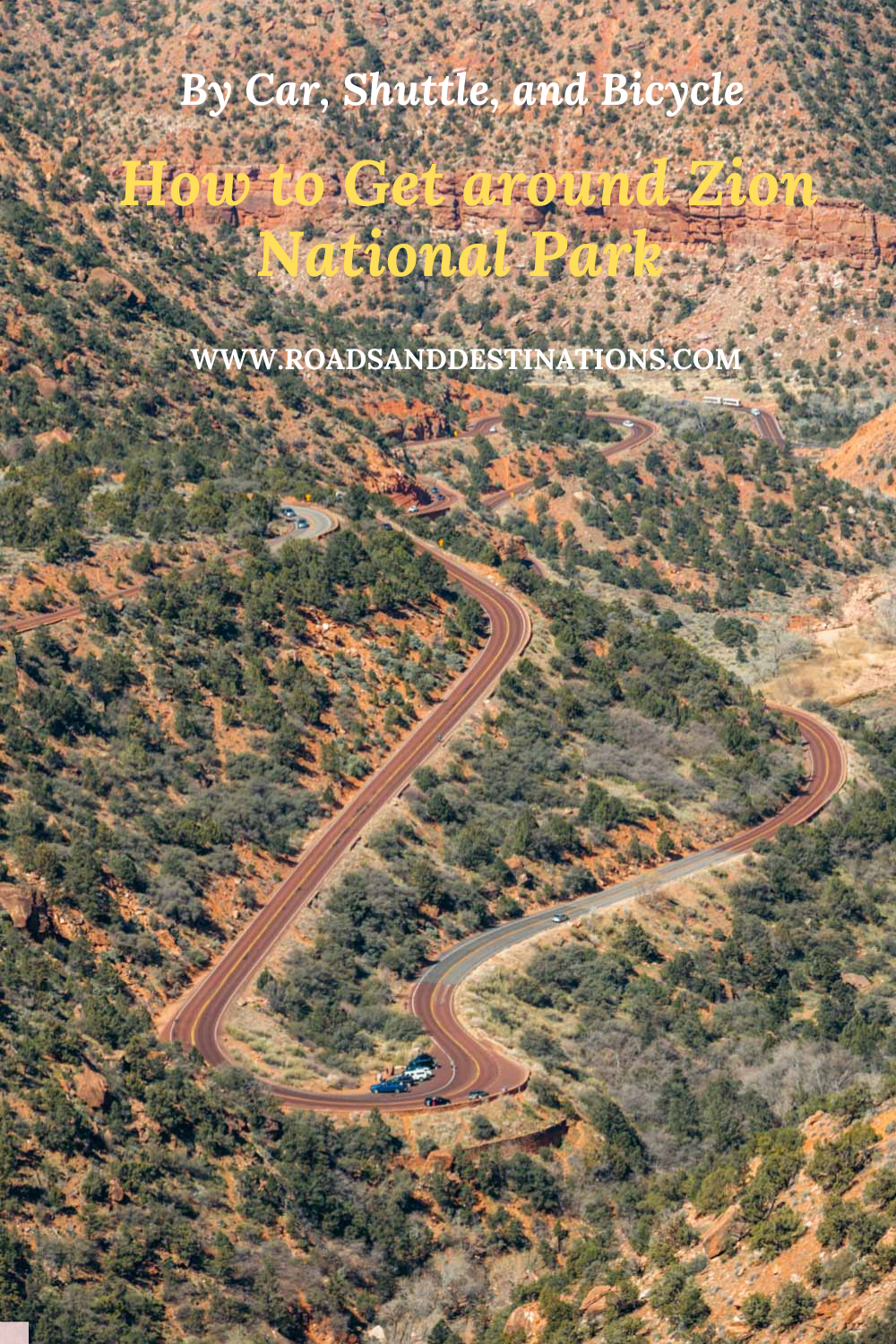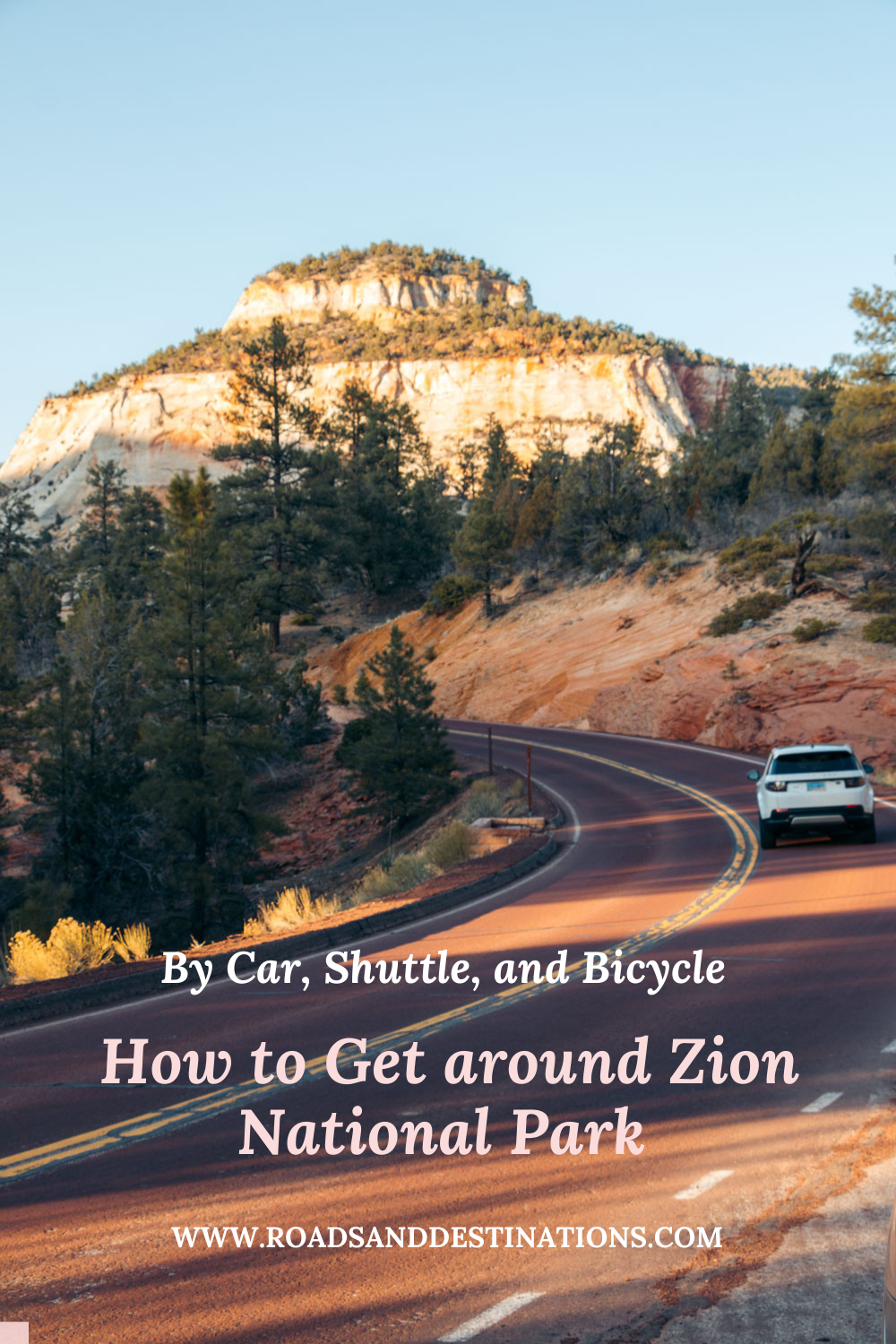Getting around Zion National Park is easy. You can do it by car, motorcycle, bicycle, on foot, or shuttle. The latter is the trickiest of them all, though.
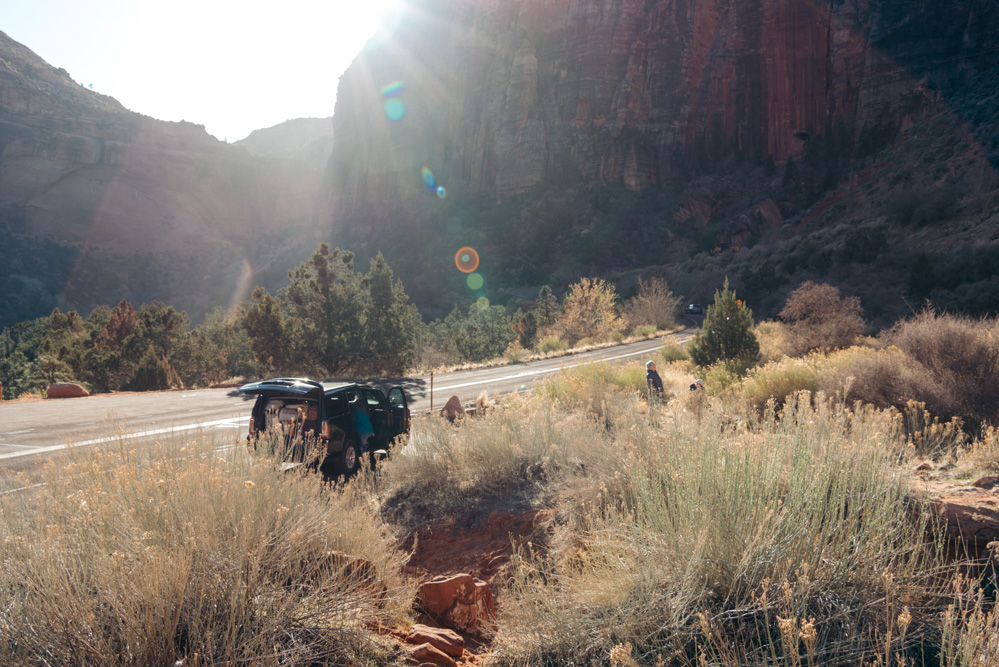
Zion National Park differs from other national parks in many ways. Getting around the area is the first topic to tap into to see these dissimilarities. So striving to preserve its unique environment, access to Zion Canyon Scenic Drive is restricted from spring through fall. Only authorized Zion shuttle operates in the main section of the park.
While this measure’s purpose is unquestionable, some inconveniences occur along the way. The visitors that have just a few days to explore Zion National Park feel them the most. Let’s start explaining not the simpliest situation with transiting in Zion and its specific sections step by step.
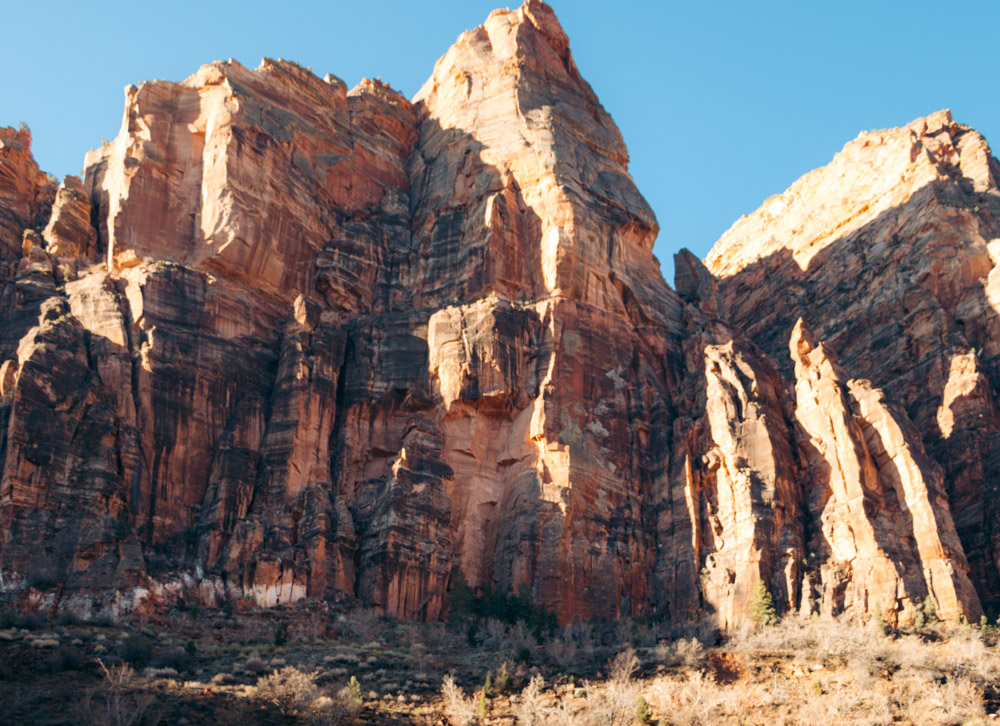
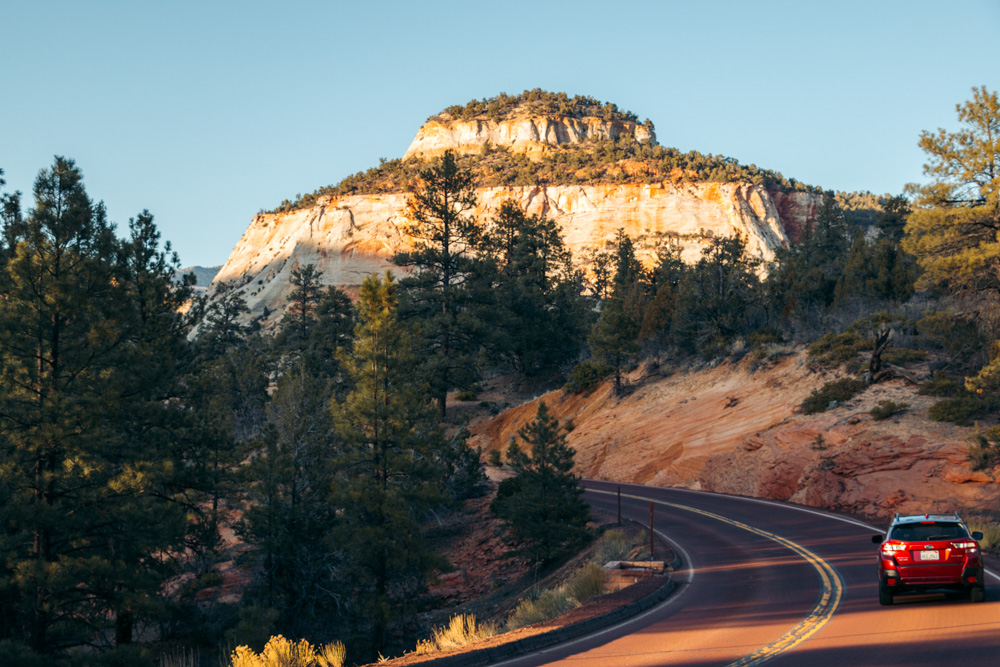
How to Get around Zion National Park: Parking
Zion National Park has plenty of parking lots along its main routes with accesses to favorite trailheads. Furthermore, a large parking lot sits conveniently near the Zion Canyon Visitor Center. Yet the parking spaces unable to accommodate all visitors, especially in the most popular sections of the park.
The Zion Canyon shuttle successfully takes care of this problem during the peak season. The parking situation, however, doesn’t get any better near the Visitor Center, from where the shuttle departs. If you visited Zion National Park before, you know that getting around this area in summer is worst than dealing with notorious traffic of Los Angeles. You can literally spend hours just searching for an open parking spot.
TIP: Try to claim your spot near the Zion Canyon Visitor Center or in the town of Springdale early in the morning and use the park’s shuttle to explore the main section of Zion National Park without a care in the world.
How to Get around Zion National Park: Springdale Shuttle
With only a couple of days to spend in Zion National Park, you want to use your time to the maximum. Searching for an available parking space certainly doesn’t fall into the category of exciting outdoor activities. If you want to avoid any inconveniences that the parking situation can impose on you, leave you car in Springdale.
Separate shuttles run from the town to Zion National Park, picking up the park’s guests from 9 stops scattered throughout Springdale. The bus is free and connects the visitors to the Zion Canyon shuttle every day from April though October.
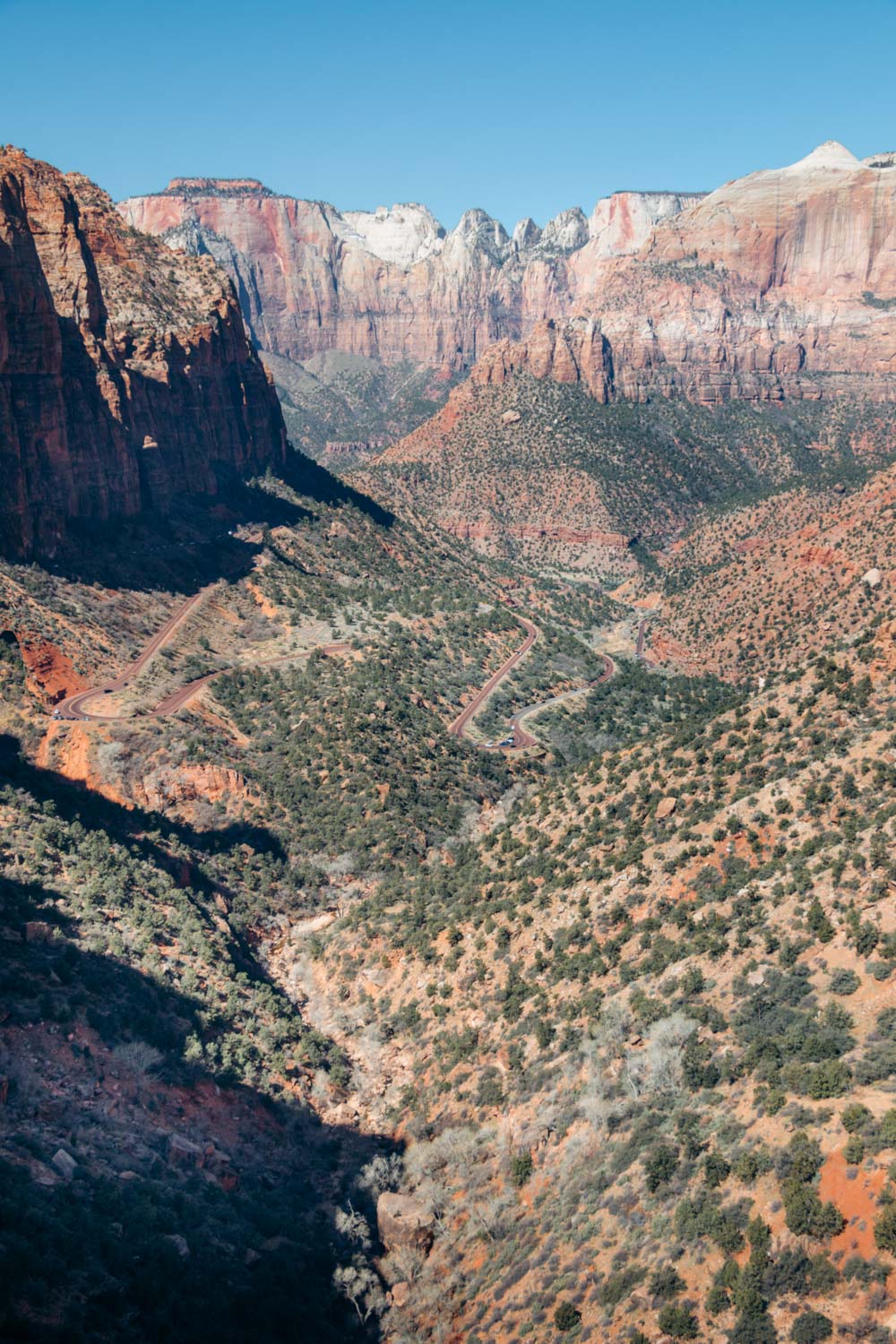
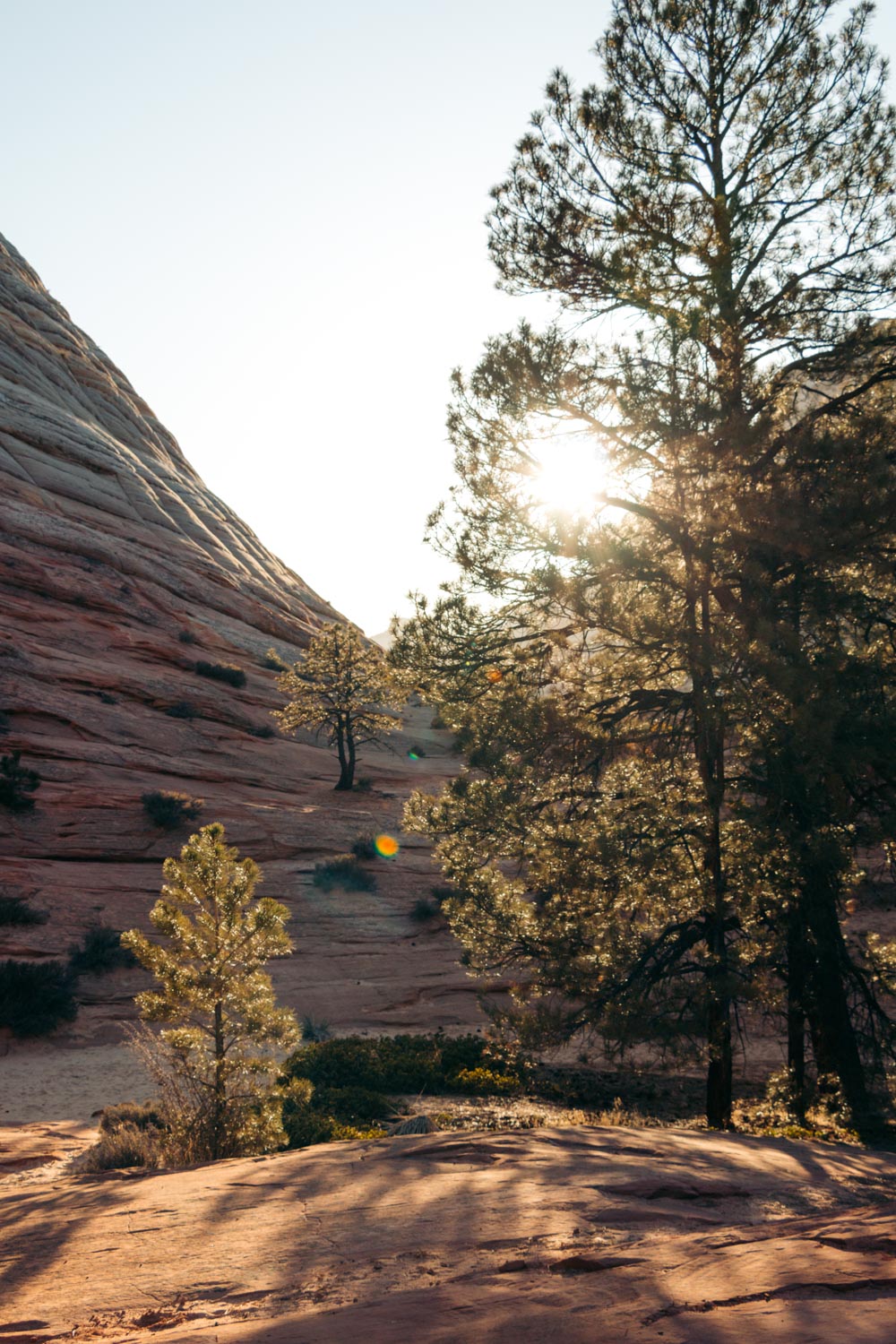
How to Get around Zion National Park: Zion Shuttle
While taking the Springdale shuttle is optional, hopping on the Zion shuttle is mandatory to get to the main section of the park most of the year. Normally if you visit Zion National Park from mid-March through November, claiming your spot of the bus is one of the fastest ways to access the popular trailheads along the Scenic Drive. Alternatively, you can hike or bike here. Private vehicles are not allowed in the main canyon during this time.
TIP: Exceptions apply to the visitors that stay inside the park, at the Zion Lodge, or those who must have cars due to some health issues. Be sure to obtain a driving permit at the Zion Canyon Visitor Center first, though.
We were somewhat unfortunate to spent a few days in the Zion National Park and Bryce Canyon National Park areas last April. Temporarily shuttle ticket system for Zion Canyon was in operation due to Covid-19 at that time, causing long lines and all sorts of inconveniences. Only a limited amount of people was allowed on the busses at once. Consequently, the visitors that were unable to book their tickers in advance had to linger for a few hours near the Visitor Center before getting a chance to board the shuttle.
Good to Know: As of May 28, 2021, the temporary measures are discontinued. The buses resume their pre-Covid-19 operations, loading the maximum amount of people allowed. Furthermore, getting around Zion Canyon becomes easier again. There is no need to purchase a ticket prior to your arrival. The free shuttles operate on a first-come, first-served basis once again.
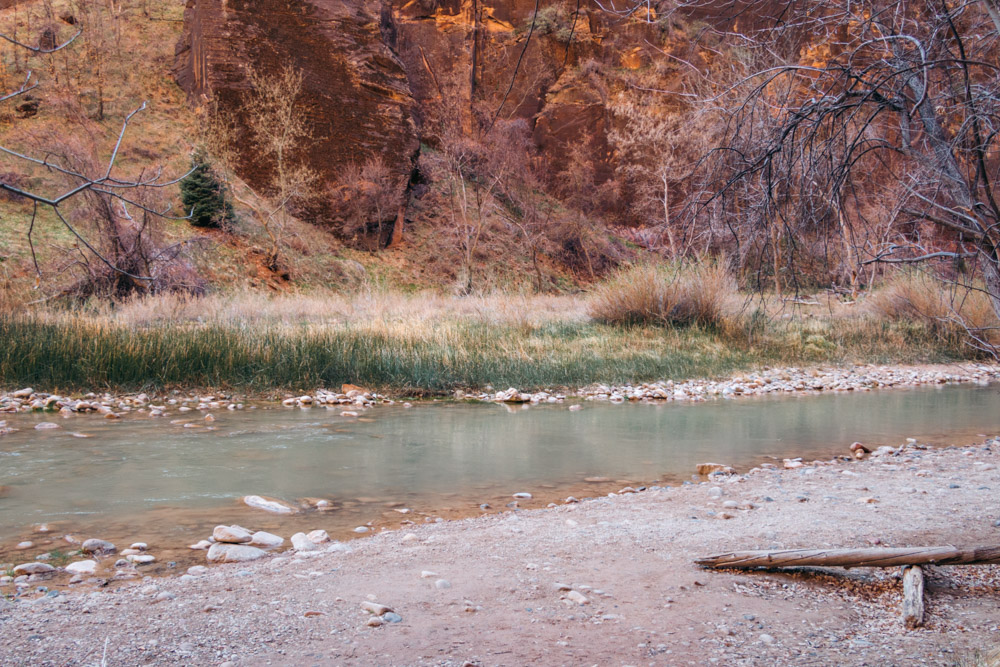
Shuttle Route: From the Visitor Center up the Scenic Drive
Two categories of shuttles exists in Zion National Park. The first group runs from the Visitor Center all the way up the Scenic Drive. Once in the main section of Zion Canyon, the bus makes several stops at such destinations as the Zion Lodge, Temple of Sinawava, and the Grotto.
The first shuttle departs from the Visitor Center at 6 a.m. The last bus leaves the area at 5 p.m. The shuttles run frequently, leaving every 6-10 minutes. When you get to the main canyon, you can hop off and hop on the shuttle any time and at any destination where the bus stops. The last bus leaves the Temple of Sinawava, the last shuttle stop, at 8:15 p.m., arriving at the Visitor Center around 9 p.m.
Closure Notice: Due to a recent major rockslide, some places, including popular trails, are temporarily closed. The restricted area includes the Human History Museum, Canyon Junction, the Court of the Patriarchs, and Weeping Rock.
TIP: Thus, be sure to check Zion’s official website for detailed information before getting to the park. Moreover, prepare for unexpected and add alternative activities to your Zion itinerary.
Circulator Bus: Inside Main Canyon
The second group of buses connects the stops in Zion Canyon along the Scenic Drive. The circulator bus runs up and down the area between 9 a.m. and 4 p.m. It doesn’t take the passengers back to the Visitor Center.
TIP: Although you can hop on and off the circulator bus when in the main section of Zion National Park, you must take the shuttle to get back to the Visitor Center.
Summing up: Typically, you need to take the Zion shuttle to get the Scenic Drive when visiting the park from mid-March through late November. Private vehicles can access the main canyon in the winter months. The shuttles usually don’t operate during the slow season.
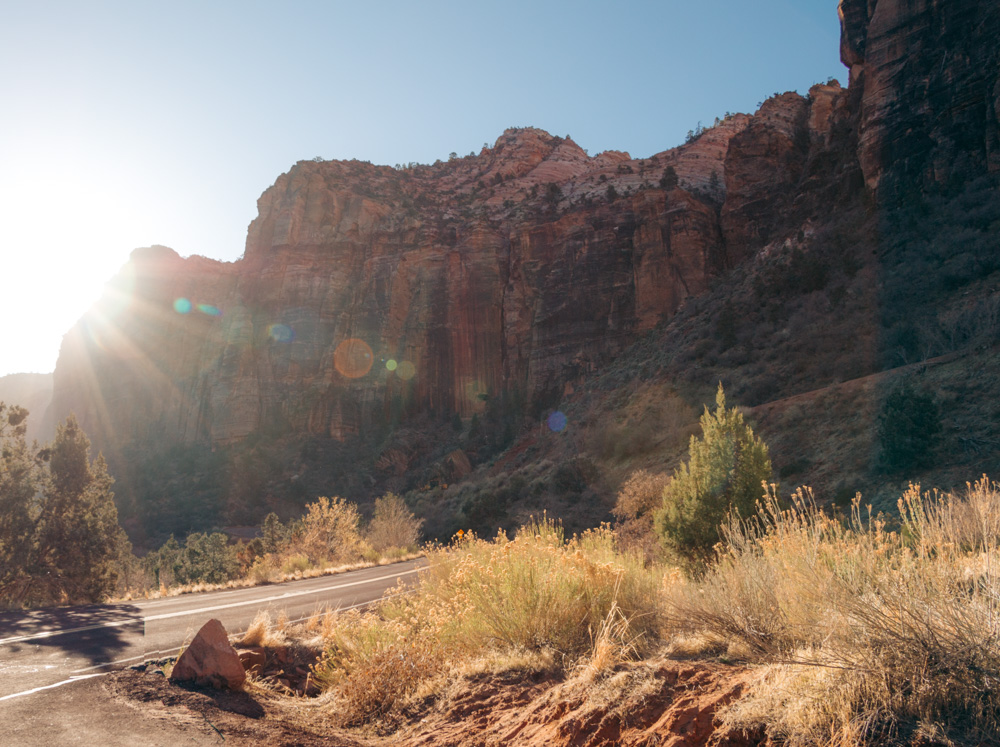
Route 9
The eastern section of Zion National Park can be reached only by private vehicles, motorcycles, bikes, or on foot. No shuttles run here. While not as popular as the main canyon, this area surprises with a plethora of panoramic views and unofficial trails.
You can access this section of the park via Route 9, also known as Zion-Mount Carmel Highway and Zion Park Scenic Byway. The section of this road that runs through the park is 14 miles long. It starts from the South Entrance and goes all the way to East Entrance, zigzagging up the mountains and running though the Zion-Mount Carmel Tunnel along the way.
TIP: The road is open all year round. Parking, however, does’t get easier even here. The best way to beat the crowds is to start your Zion explorations in the morning and claim your parking spot as early as possible.
Getting around Different Sections of Zion National Park
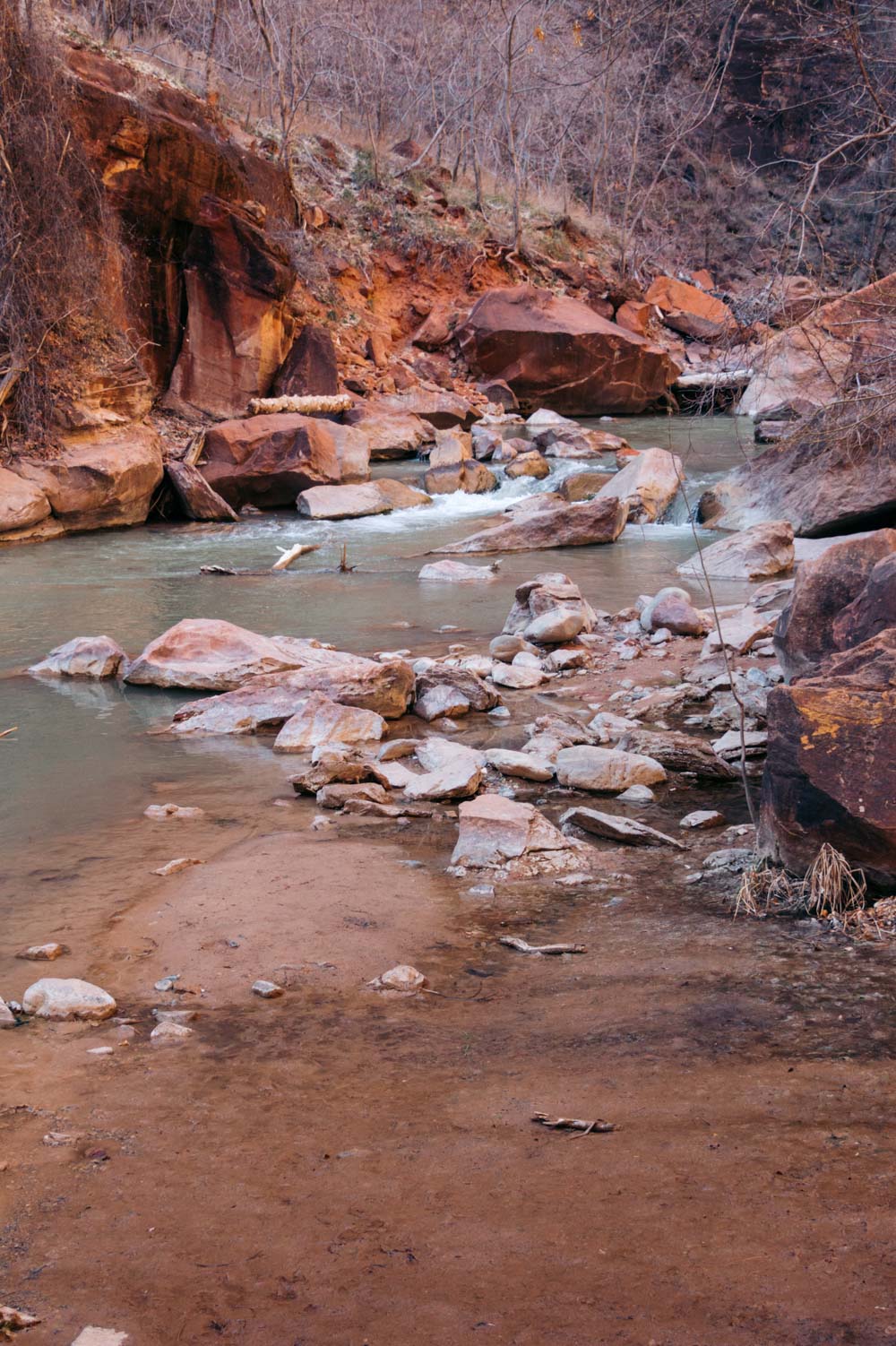
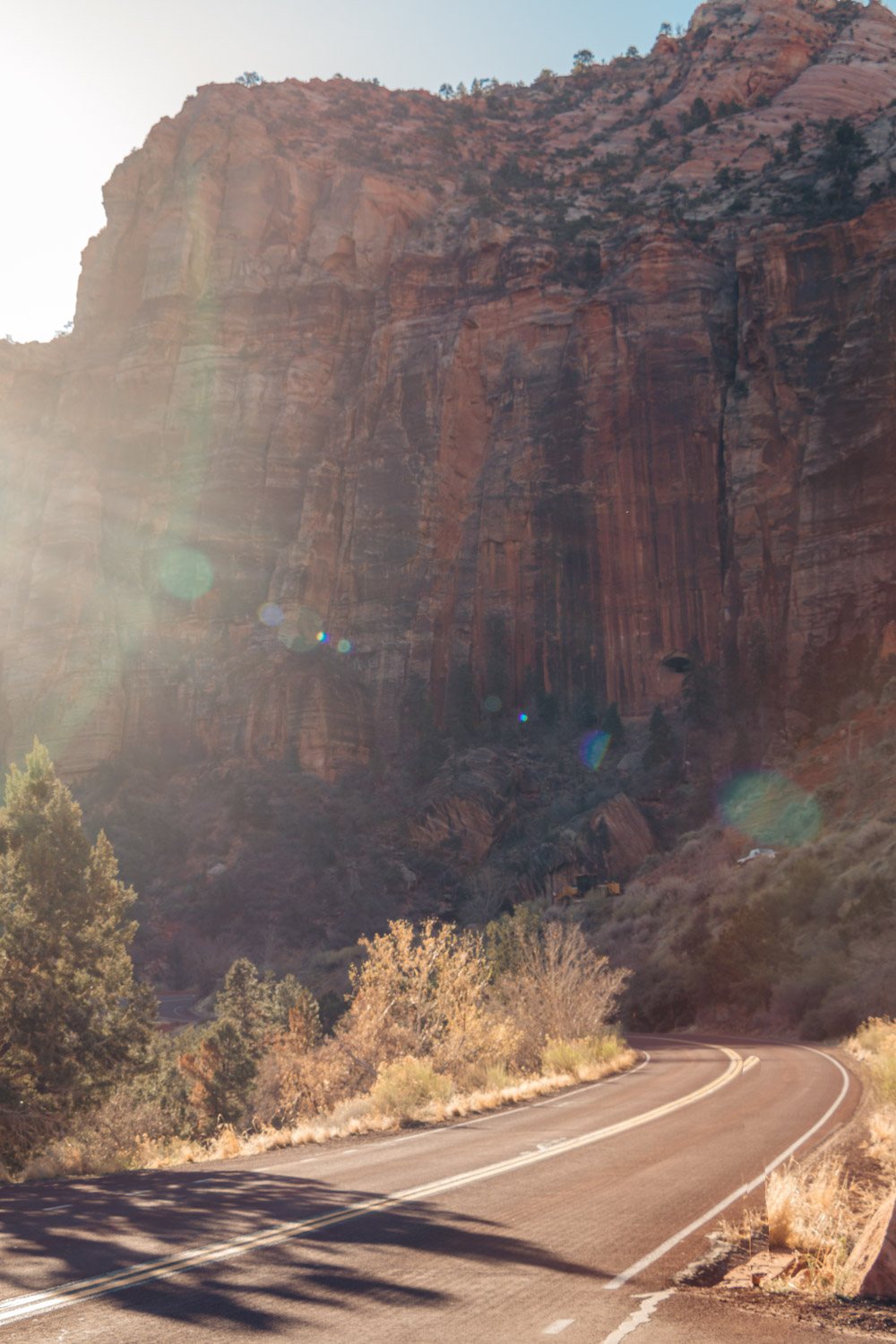
Zion Canyon
For many visitors, getting around Zion National Park includes first of all traversing its main section or the main canyon. As we discussed earlier, it’s the trickiest place to explore most of the year as the park’s shuttle is practically the only transportation allowed here.
To summarize, this section of Zion National Park stretches from the the town of Springdale, located just south of the park, all the way to the Temple of Sinawava. The Visitors Center, the Zion Human History Museum, the Zion Lodge, and the majority of the official trails also reside in the main canyon.
- Getting around Zion Canyon by car. Driving through the main section is limited to the winter months. The easiest and fastest way to get around the area during the rest of the year is by the Zion shuttle.
- Getting around Zion Canyon by bicycle. To avoid the long lines waiting for the shuttle, use a bicycle and explore Zion Canyon at your own pace. The bikes can be rented at the Springdale Visitor Center. Bear in mind, though, biking is allowed only on the main roads in Zion National park. No vehicles, including two-wheeled transport, can enter the trails.
- Getting around Zion Canyon on foot. The most fitted visitors don’t need any vehicles – whether it’s four- or two-wheeled – to get around the main section of Zion National Park. They hike. The distance between the Visitor Center to the Temple of Sinawava, the last shuttle stop, is approximately 8 miles. Furthermore, this way of getting around Zion National Park suits first of all visitors with dogs. The pets are allowed only on the main roads and along the Pa’rus Trail.
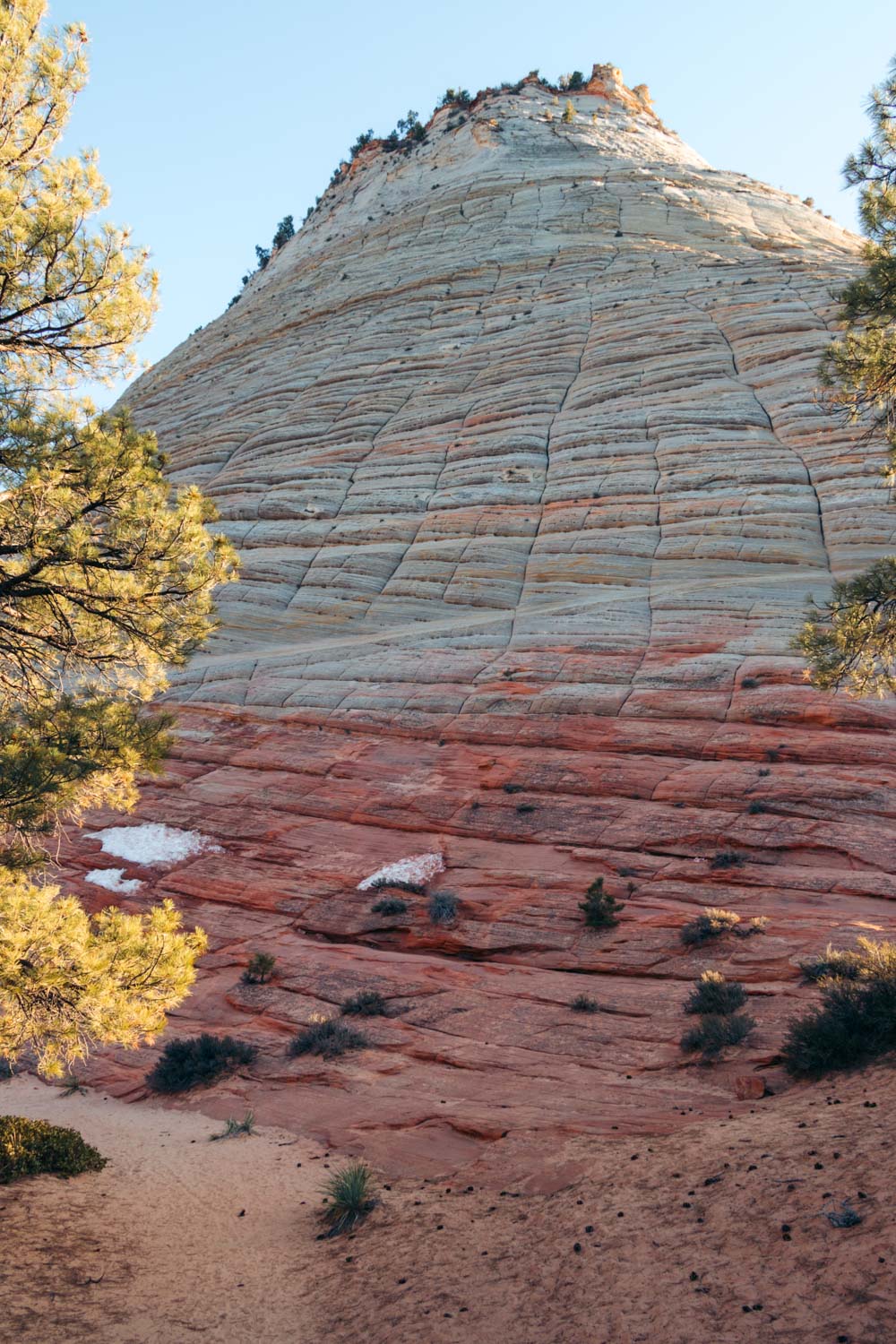
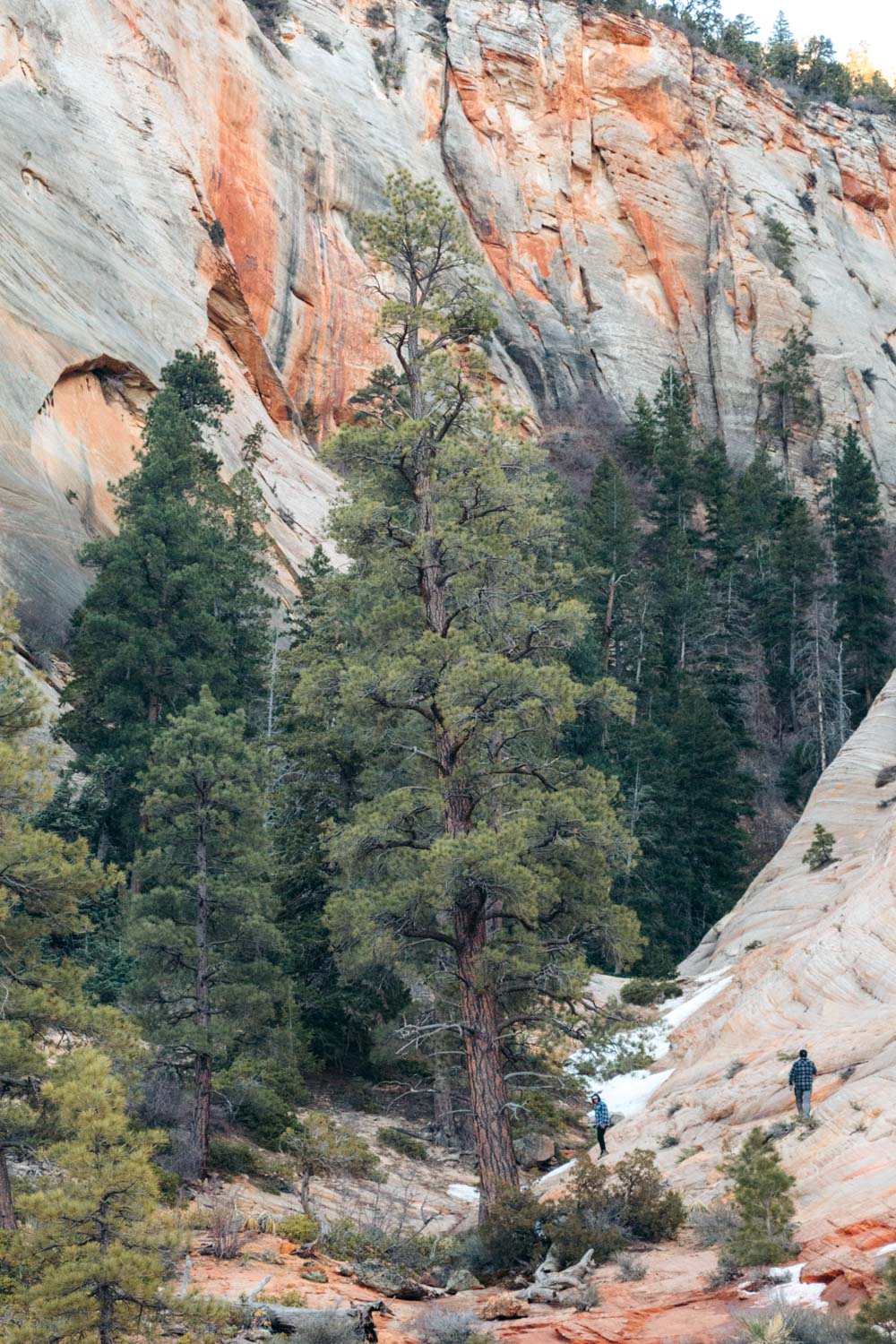
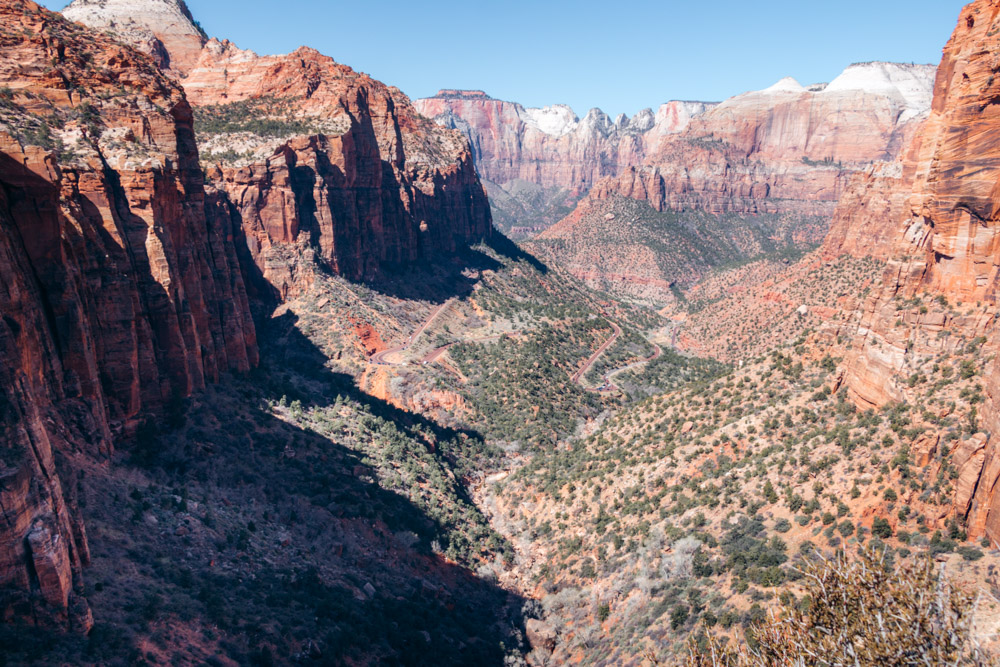
Upper East Canyon
Upper East Canyon sits in the east corner of the park. The faster way to access this section of Zion National Park is by getting here from the East Entrance. Those who intend to reach Upper East Canyon from the South Entrance, should drive along Route 9, passing through the Zion-Mount Carmel Tunnel.
No shuttle services are required to get around this area of Zion National Park. In fact, the public bus does’t even operate here, making it easier for those who drive. On the other hand, parking is limited. Therefore, you’re better off starting your adventures and getting around the eastern section of Zion National Park as early in the morning as possible.
Although, fewer visitors make it all the way to this part of the park, Upper East Canyon doesn’t cease to astound. Home to Checkerboard Mesa, the Canyon Overlook, and a myriad of unofficial trails, this area is a stunning hidden gem you can’t miss.
- Getting around Zion Upper East Canyon by car. Driving is by far one of the best ways to get around the area. No shuttle operates in Upper East Canyon.
- Getting around Zion Upper East Canyon by bicycle. If long-distance cycling is your ultimate goal of getting around Zion National Park, go for it. Keep in mind, though, no bikes or pedestrians are allowed in the Zion-Mount Carmel Tunnel. If you head to the Upper East Canyon area from the south, hitchhike with large trucks when getting through this engineering wonder of Zion National Park.
- Getting around Zion Upper East Canyon on foot. Exploring the official and unofficial trails, hidden canyons, and secluded washes on foot is the only possible way here. Walking all the way to this area of Zion National Park, regardless whether you start from the South or East Entrance, however, is infeasible for the majority of the visitors.
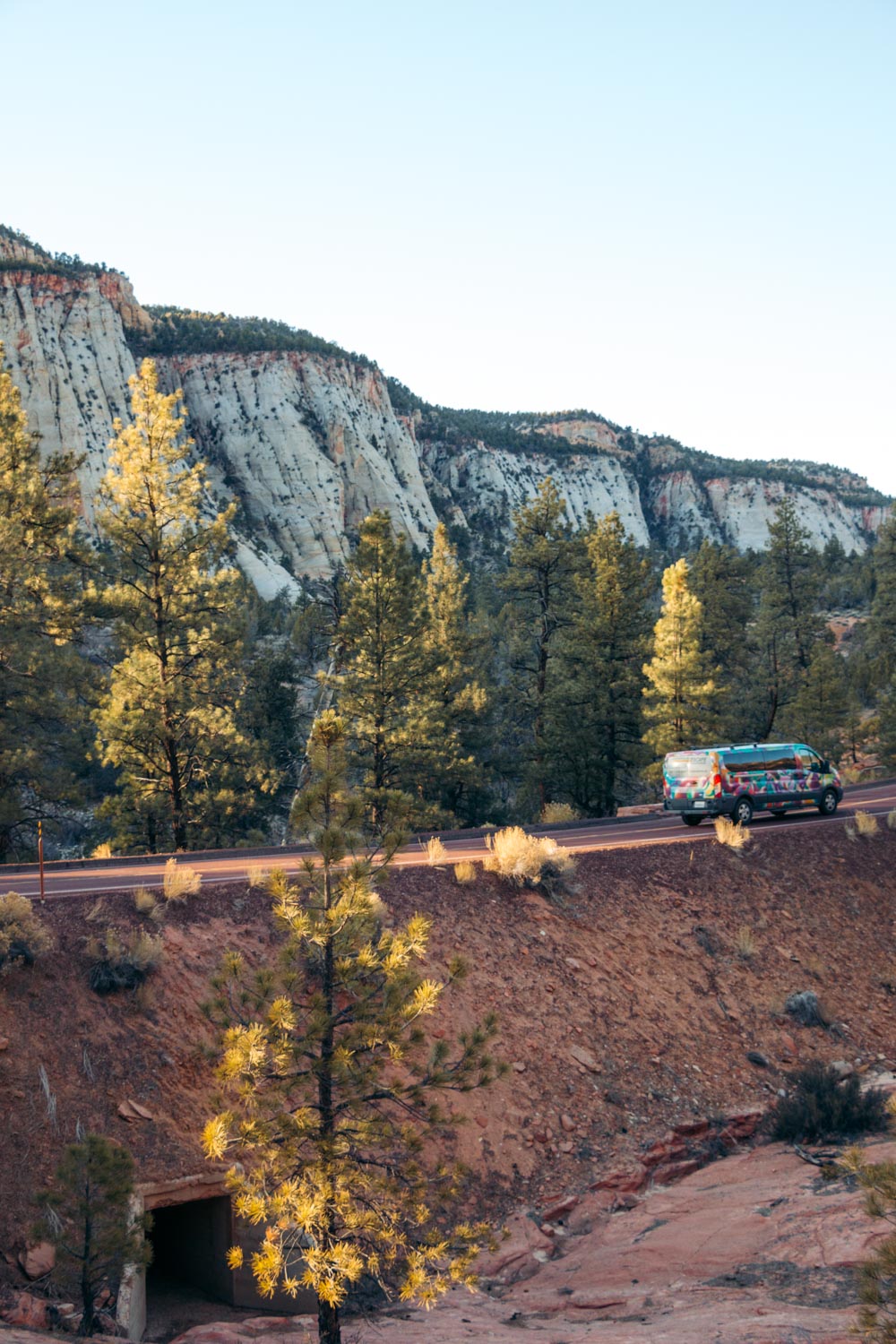
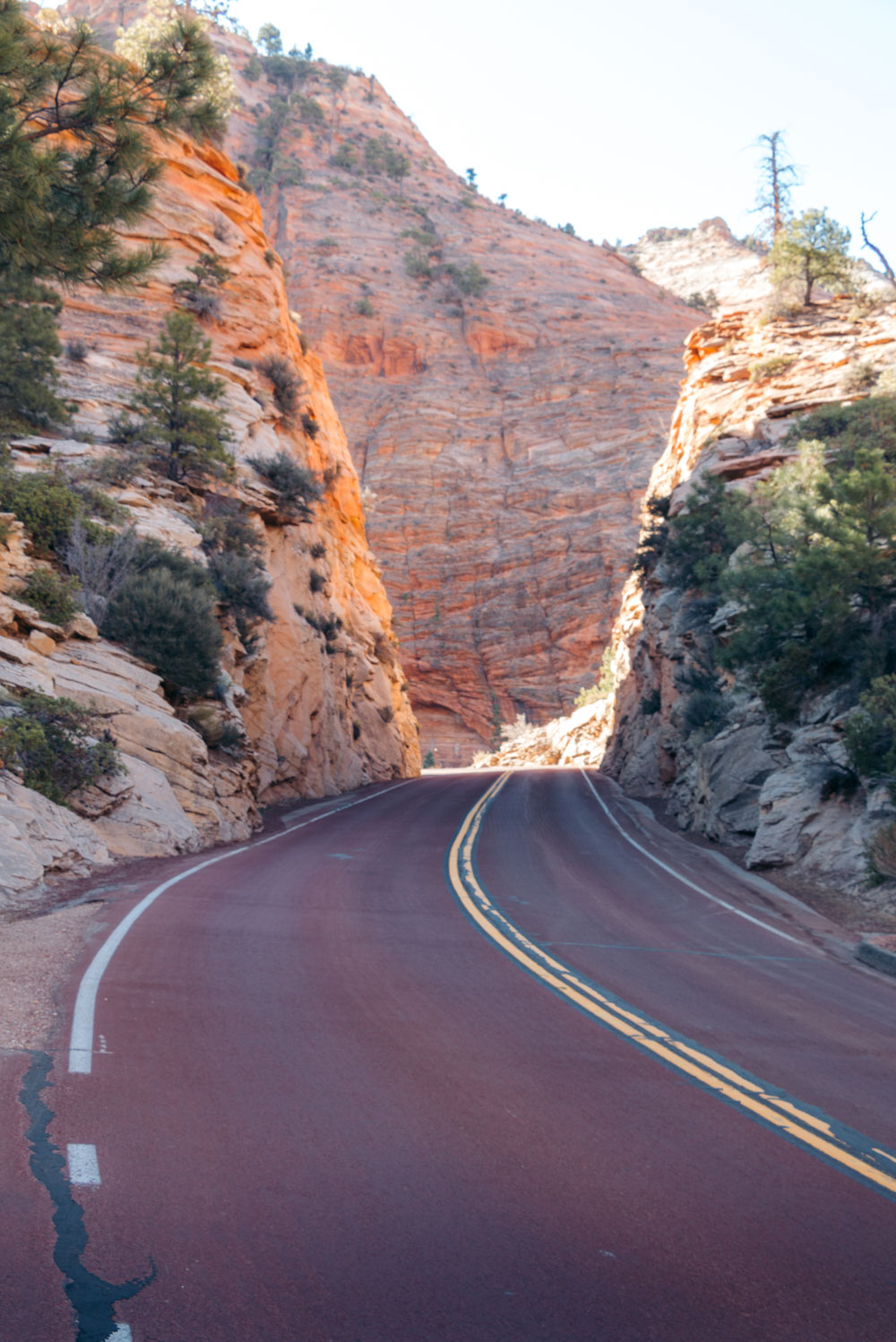
Kolob Terrace Wilderness
The Kolob Terrace is one of the lesser-known and visited sections. Getting around this area of Zion National Park requires driving north from the town of Virgin along the Kolob Terrace Road. Those who reach this part of the park, however, never regret. Home to the stunning, but tedious Subway hike, the area is the playground for the most experienced hikers.
TIP: You can’t get around the upper section of this Zion National Park’s area in winter due to heavy snowfalls.
- Getting around the Zion Kolob Terrace by car. Similar to the majority of other sections of Zion National Park, driving is the best option of getting to and around the area. The shuttle doesn’t accommodate neither the Kolob Terrace nor the Kolob Canyons.
- Getting around the Zion Kolob Terrace by bicycle. Again, it’s all up to you. The scenic Kolob Terrace Road is enticing indeed. In fact, it’s considered one of the best bike rides in the park.
- Getting around the Zion Kolob Terrace on foot. Drive to the area, find a parking space, and feel free to explore the Kolob Terrace Wilderness through and through. Getting all the way to this secluded section of Zion National Park on foot might be too long of a walk for many visitors.
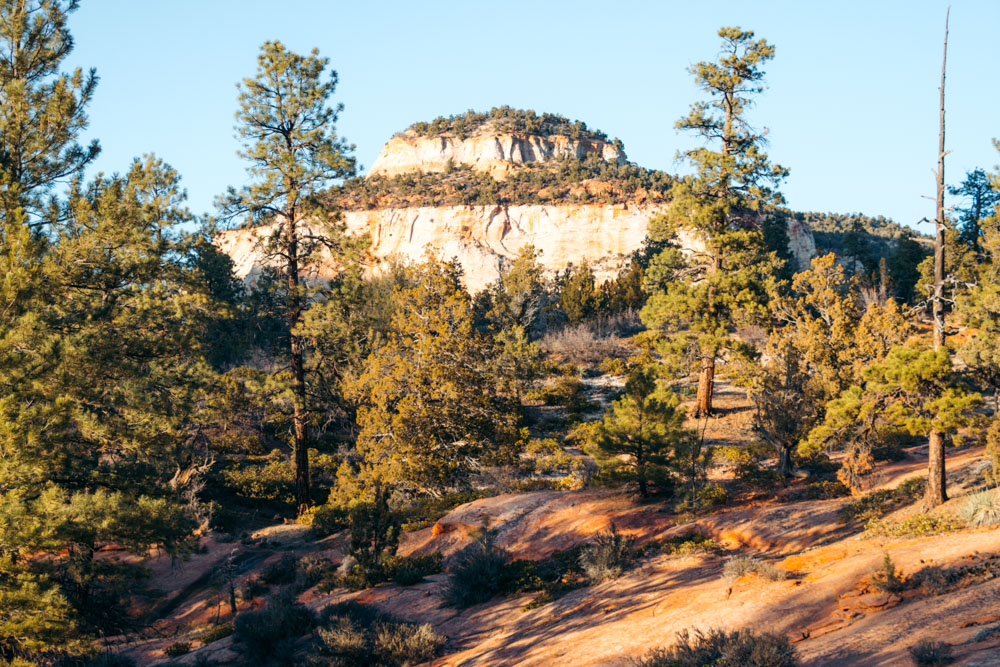
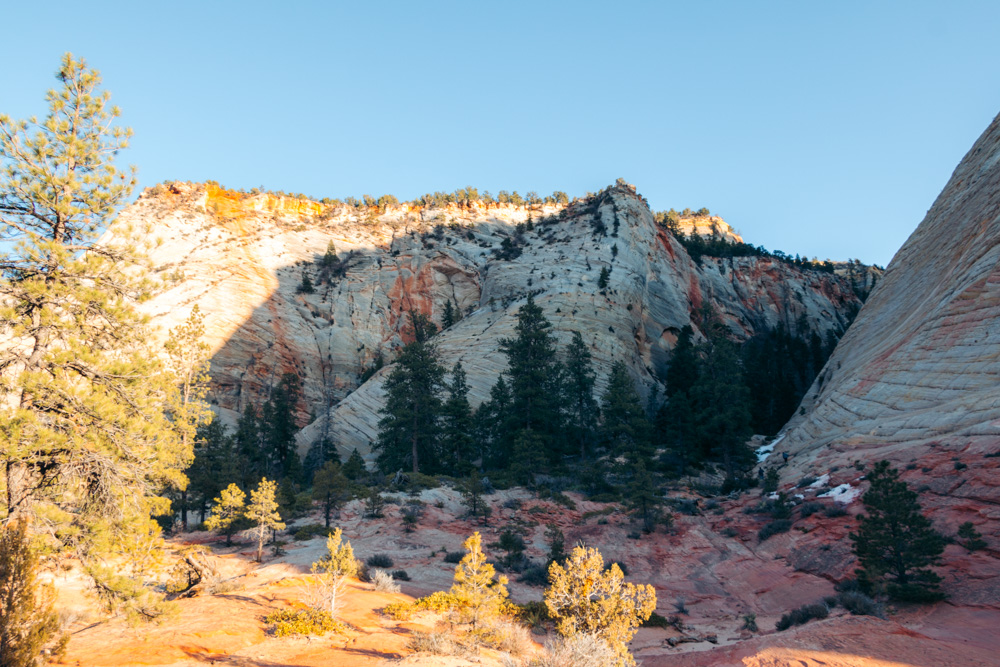
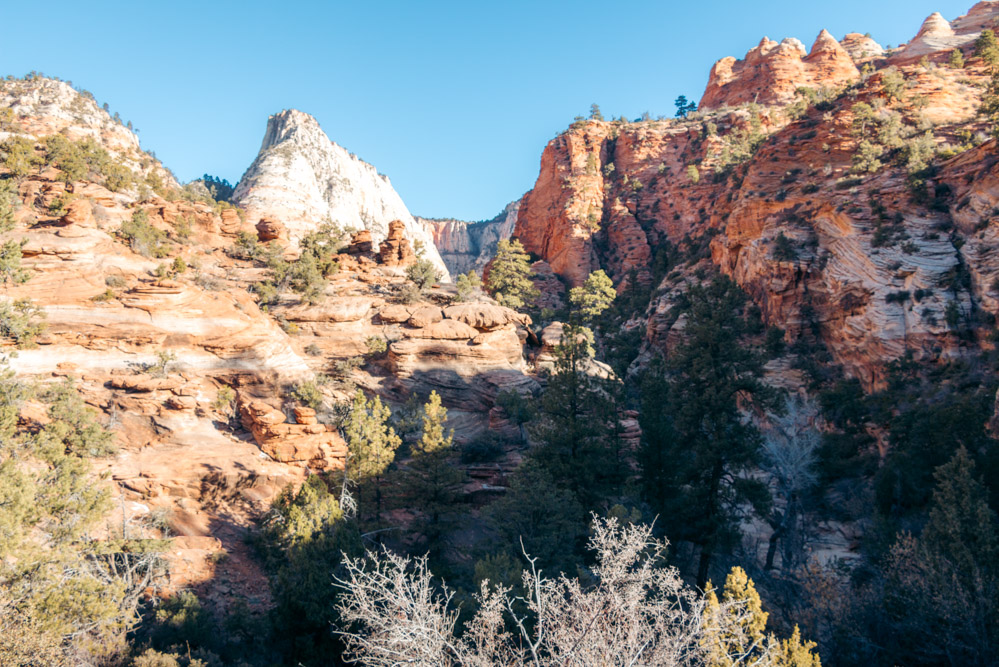
Kolob Canyons
Not the most popular section of Zion National Park, the Kolob Canyons sits in the northwestern section of the park. To get to this area from Springdale, drive for approximately 40 miles along I-15. Use exit 40 and enter the park though the Kolob Canyons Entrance. The secluded section allures primarily with its own 5-mile scenic drive and such natural attractions as Double Arch Alcove and Kolob Arch.
- Getting around the Zion Kolob Canyons by car. No shuttle operates in this part of the park. Getting to and around this area of Zion National Park is possible mainly by personal vehicles.
- Getting around the Zion Kolob Canyons by bicycle. Bring your bike along and enjoy the scenic drive from your two-wheeled “horse”.
- Getting around the Zion Kolob Canyons on foot. As it’s the case with the other remote areas of Zion National Park, you’re free to walk around and explore the area on foot. A walk all the way to the Kolob Canyons from the East or South Entrances is too long for an average Zion’s guest.
Desert Lowlands
Even fewer people venture to the Desert Lowlands, the hottest and driest section of Zion National Park. The area nestles west of Springdale. The main attractions here are a few remote washes and routes to Canaan Mountain.
- Getting around the Zion Desert Lowlands by car or on foot. Driving is the most convenient way of getting to the Zion Desert Lowlands. Once arrived, dive deeper into this dry terrain and explore it on foot.
How to Get around Zion National Park: Map
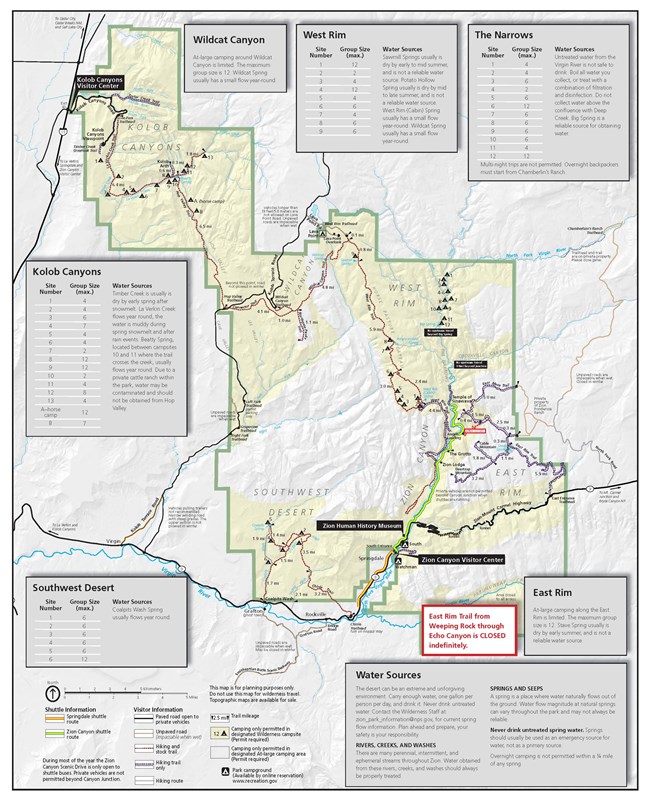
More Information about Zion National Park
- POPULAR HIKES: Hike Zion Canyon Overlook Trail & Zion Riverside Walk Trail
- SECRET HIKES: Zion Secret Trails: Shelf Canyon Hike Near Canyon Overlook
- LODGING: Where to Stay in and near Zion National Park: Camping and Lodging
- TIPS: 10 Things to Know before Visiting Zion National Park
- ITINERARY: 2 Days in Zion National Park: Itinerary for a Perfect Weekend Getaway
You Might also Find Interesting:
- JOSHUA TREE NATIONAL PARK: Weekend in Joshua Tree National Park
- VALLEY OF FIRE STATE PARK: Visit Valley of Fire State Park
- YELLOWSTONE NATIONAL PARK: 10 Things to See on First Visit to Yellowstone
- GRAND TETON NATIONAL PARK: How to Spend One Day in Grand Teton National Park
- SEQUOIA NATIONAL PARK: 2 Days in Sequoia National Park Itinerary
- KINGS CANYON NATIONAL PARK: How to Spend One Day in Kings Canyon National Park
- MOUNT RAINIER NATIONAL PARK: Visiting Mount Rainier National Park in One Day
- KENAI FJORDS NATIONAL PARK: Kenai Fjords National Park
If you enjoyed this post, don’t forget to pin it for later and share it with your friends.
